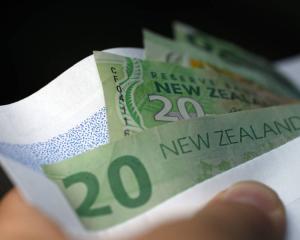
The central bank left its OCR unchanged at 8.25%, with governor Alan Bollard painting a gloomy picture for economic activity in New Zealand.
The main reasons for the deterioration in the outlook for economic activity were weaker prospects for world growth, tighter credit conditions, a sharper-than-expected slowing in the housing market and recent dry weather.
The bank expected GDP growth of about 2% over the next three years.
‘‘Despite the weaker outlook for activity, we expect headline inflation to remain high, partly due to the inclusion of the planned emissions trading scheme in our projection. Higher food and energy prices are also contributing to near term inflation".
‘‘Furthermore, over the medium term, a tight labour market, strength in commodity prices and the impact of announced government spending plans and assumed personal tax cuts will add to inflationary pressure.''
Excluding the effects of the emissions trading scheme, inflation was projected to return close to the mid-point of the 1% to 3% target band by 2010.
Given the outlook, Dr Bollard expected the OCR would remain at 8.25% for a ‘‘significant time yet'' to ensure inflation remained within the band in the medium term.
The New Zealand Manufacturers and Exporters Association said that although the Reserve Bank's decision to hold to the OCR was expected, there were signs the wider economy was beginning to share some of the export pain.
Chief executive John Walley believed there was still the possibility of a rate cut later in the year.
‘‘The whole economy is slowing fast and today's monetary policy statement reflected that.
‘‘The costs to New Zealand companies and households have already risen sharply during the past 12 months due to the increase in the cost of borrowing, petrol costs, the strong NZ dollar, and now we are seeing the returns from housing investment reflecting the declining margins pain for exporters.''
It was election year, the economy was being squeezed from all sides and that would put more pressure on the Reserve Bank for a rate cut in the third quarter this year.
Any later would be too close or on the wrong side of the election, Mr Walley said.
Bank of New Zealand economist Stephen Toplis said he was nervous about the way ahead.
The housing market was looking ‘‘extraordinarily shaky''.
‘‘Perhaps most importantly, all and sundry are now being barraged with the news that now is not a good time to buy a house because houses will soon be cheaper. This becomes a self-fulfilling prophecy as prospective buyers retreat to the sidelines leaving those who have to sell in an unenviable position.''
Westpac chief economist Brendan O'Donovan said the tone and forecasts in the statement presented an unappealing but unsurprising mix of weak growth and high inflation.
The market was poised for a ‘‘balanced'' statement with no change in rates and no near term policy bias.
There was something for everyone in the forecasts, both for the growth doves and the inflation hawks, so there was only a muted market reaction, he said.
The dollar jumped around half a cent and the swap rates increased about 0.3%.












